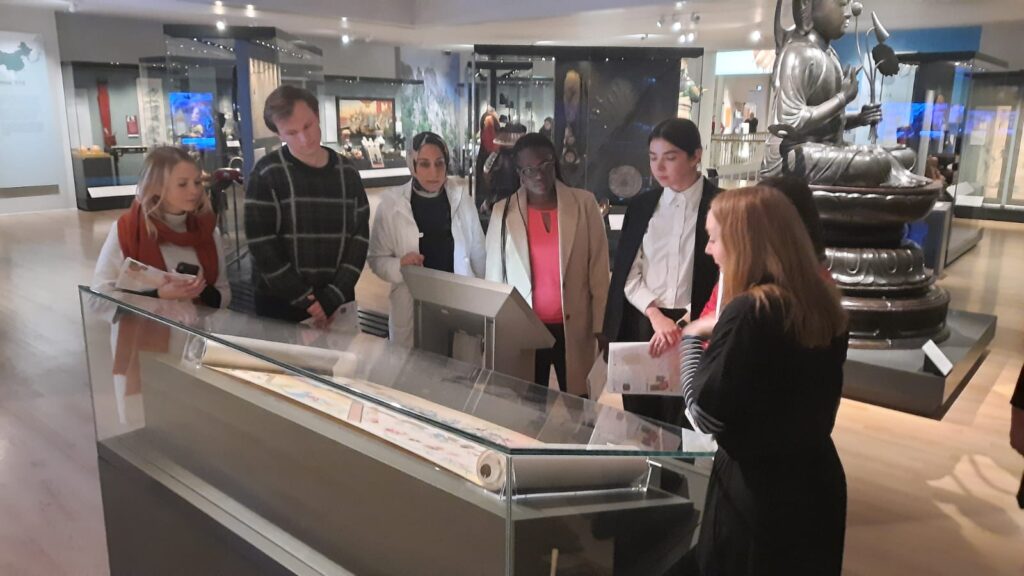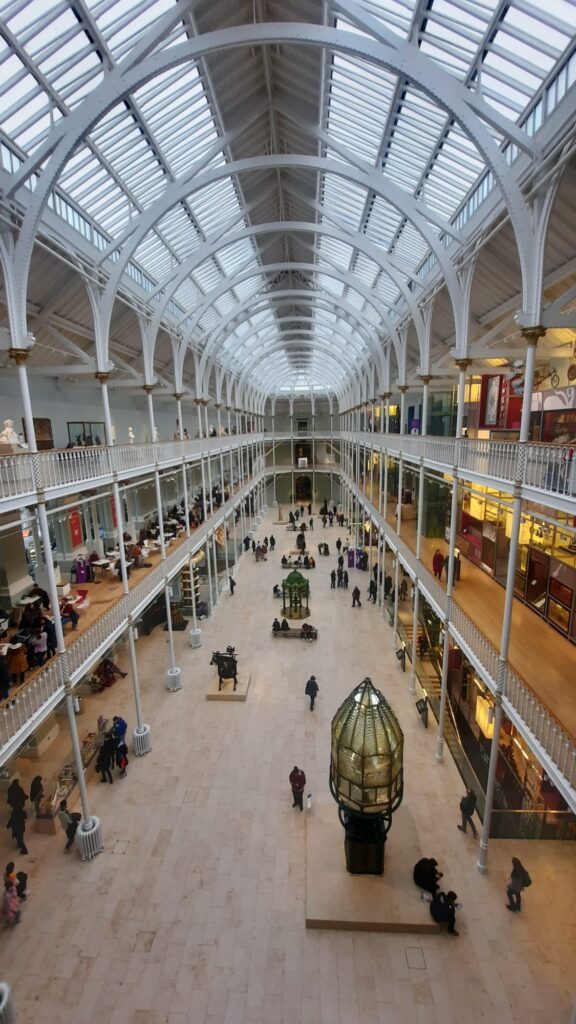Visiting the National Museum of Scotland (Ioan Oprea, Romania, ITP 2019)
As the ITP legacy project for attending Museums Association Conference continues in Edinburgh, the ITP team arrived today at The National Museum of Scotland. Hospitality awaited us there both from the museum and the staff. I always believed, somehow, life is cyclical and saying this I remember that one of my oldest memories from kindergarten is about a role I had in a theatre scene as a Sottish bagpiper. I felt proud then without knowing – as a child – why, but I do know now. Standing today in the NMS, in the heart of Edinburgh, I felt the pride and the joy of being here, a feeling similar to the one from nearly three decades ago and today I finally lived and seen the pride of being Scottish. I believe the museum, through its amazing buildings, collections and displays, manages to show and give this feeling to each and every one of its visitors outside Scotland.

Just some time ago, the museum set out it’s goal to be the most known museum outside of London, a high goal, but not far away from it at all. As we found out from the generous presentations, especially those offered by John Giblin – Keeper, Department of Global Arts, Jilly Burns, Head of National and International Partnerships, and Chante St. Clair Inglis – Head of Collections Services, NMS holds today 12.4 million artefacts, and most importantly, an impressive number of museum professionals and volunteers who are doing their best to preserve them and to get the best out of them trough events, exhibitions and various actions for their national and international audience. As a national museum, NMS pays a lot of attention to its reputations; its specialists are taking care of this aspect all the time when they talk or work with their audience or in their relations with the other nearly 400 museums from Scotland and all the others across the country and the globe.


NMS is a place both for visitors and museum professionals; its practices are accessible through their website. The collections have been mostly digitalised – particularly when the pandemic hit us all – and audiences of all ages are in its buildings, in the permanent and temporary exhibitions. But one must note the vastness of NMS galleries/spaces and its more than 29,000 artefacts in displays, for which a day visit might not be enough. Being so big and so well prepared, I was very happy to notice that NMS also pays a lot of attention to learn from other museums, like the British Museum, and is proud to mention they are improving their practices by learning from others. At the same time, NMS stands as a beacon for other smaller museums, is happy to help other museum and collections and to teach the non-familiar ones about how important their collections are and why is it important to save them. There is 200 years of collections in NMS and, as many others could say, their artefacts are in very good hands here. A lot of work is done so that they can be accessible to everyone, their stories will be heard to a large number of people and by doing all this. I can say I am happy to see that NMS stands as a beacon of museums in this region, a true gem of the North.
